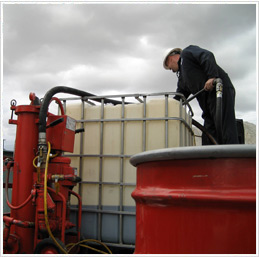Waste Services Our specially trained service staff provides scheduled pick-ups as well as demand-based service calls. We also provide the pertinent documents and manifests to keep you in compliance with governmental and regulatory mandates.
|
 |
Hazardous Waste Resources
EPA ID Numbers
Persons who generate, transport or offer for transport, treat, store, or dispose of hazardous waste generally must have an Identification (ID) Number, which is used to identify the hazardous waste handler and to track the waste from its point of origin to its final disposal ("From Cradle to Grave"). Most hazardous waste falls into two types in California: waste regulated by the federal government under the Resource Conservation and Recovery Act is known as "RCRA waste"; waste regulated by California law alone is known as "non-RCRA" or "California-only" waste. All hazardous waste in (RCRA and non-RCRA) California is regulated under state statutes and regulations. If a business generates more than 1 kilogram of RCRA acutely hazardous waste per month or more than 100 kilograms of other RCRA waste per month, they must have a federal ID number. If the business generates 100 kilograms or less of RCRA waste or one kilogram or less per month of acutely hazardous waste, and meet certain other requirements, they are exempt from having a federal ID number. These businesses are called conditionally exempt small-quantity generators or CESQGs. DTSC issues ID Numbers for generators, transporters, and treatment, storage, and disposal facilities that handle hazardous wastes not regulated under RCRA. As stated above, this depends on the type of waste that you generate and the rate at which you generate it.
Hazardous Waste Manifests
The law requires that most hazardous waste be transported from hazardous waste generators to permitted recycling, treatment, storage, or disposal facilities (TSDF) by registered hazardous waste transporters, and that each shipment be accompanied by a hazardous waste manifest. The manifest is the document that provides information for "cradle-to-grave" tracking of the hazardous waste.







